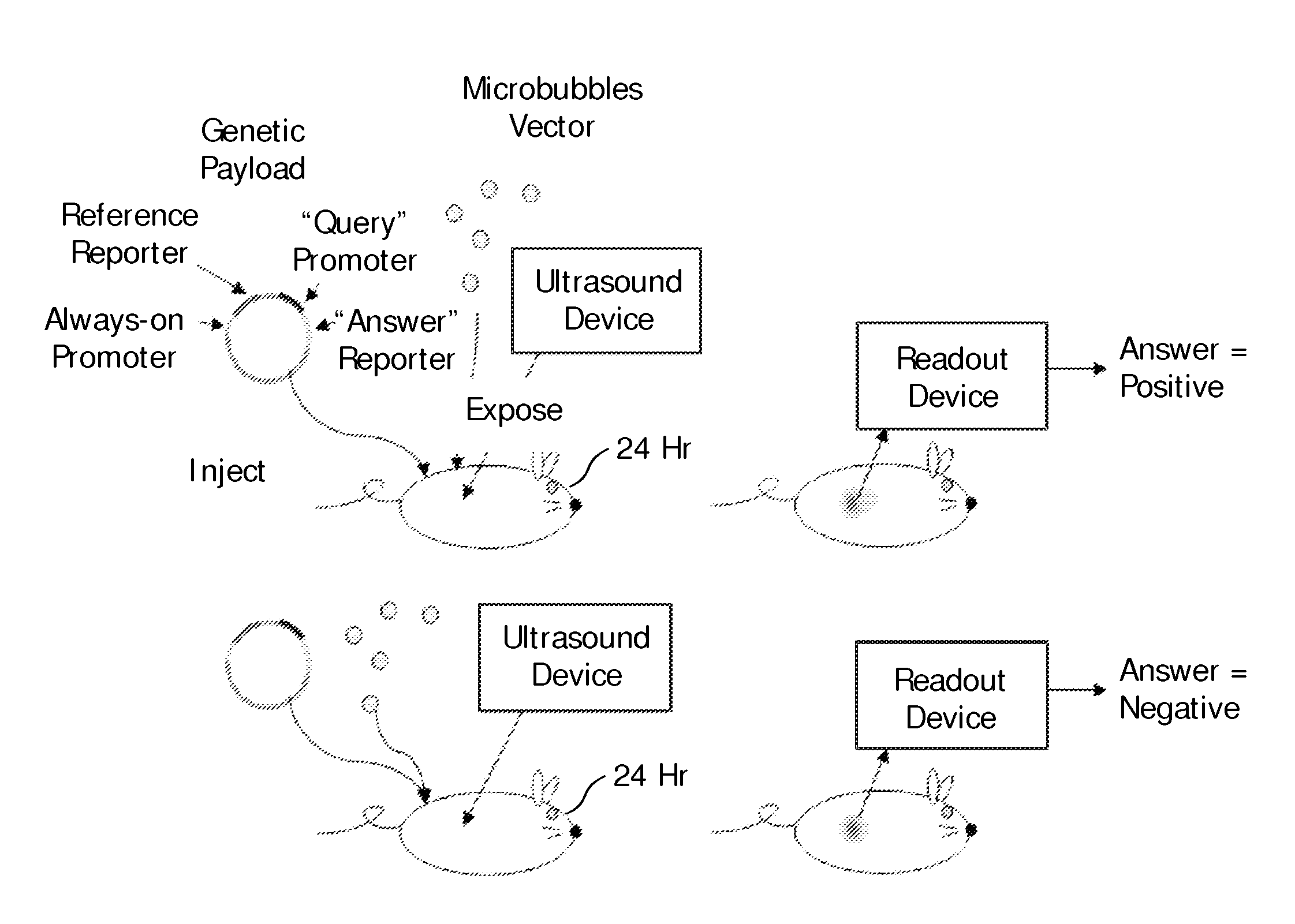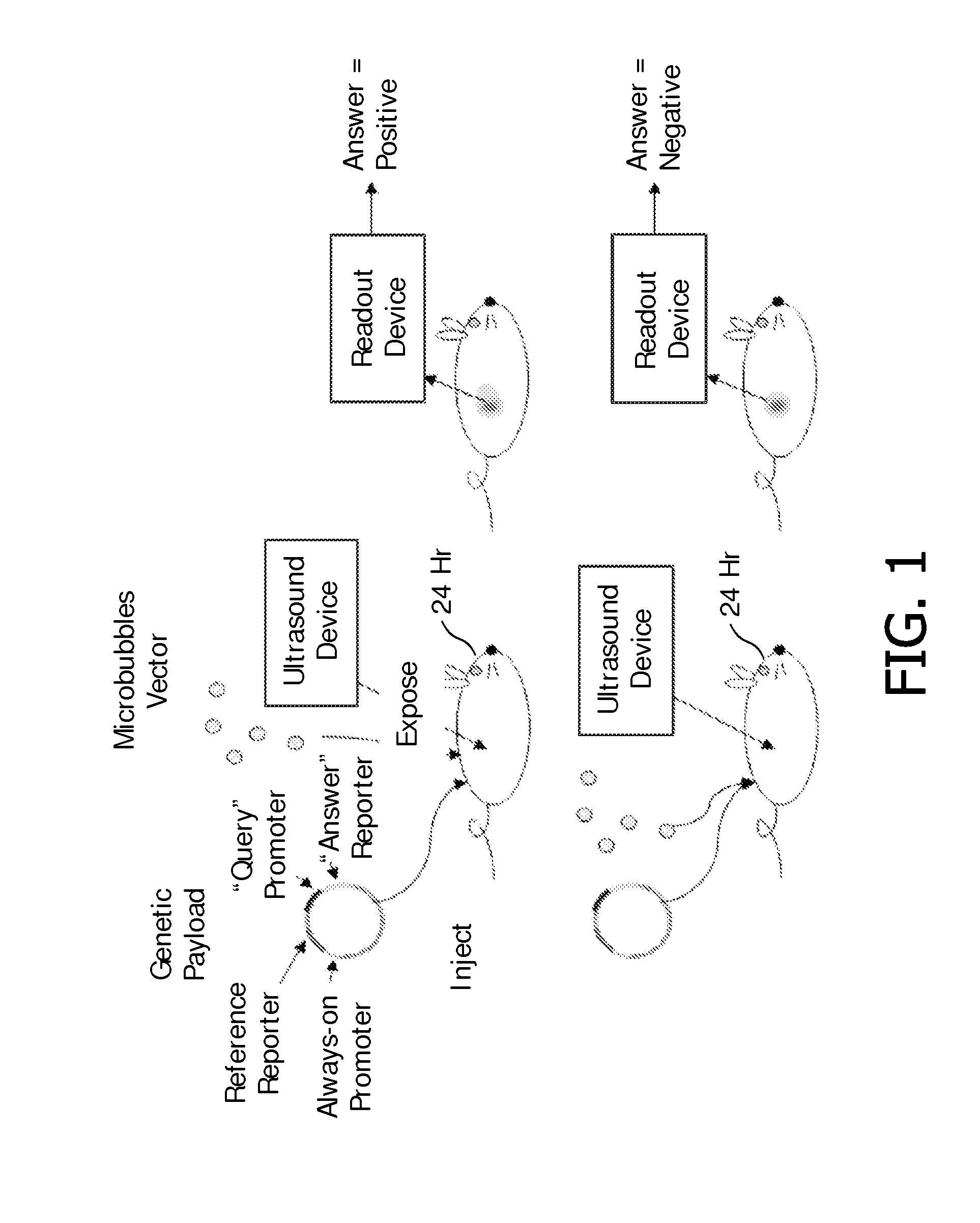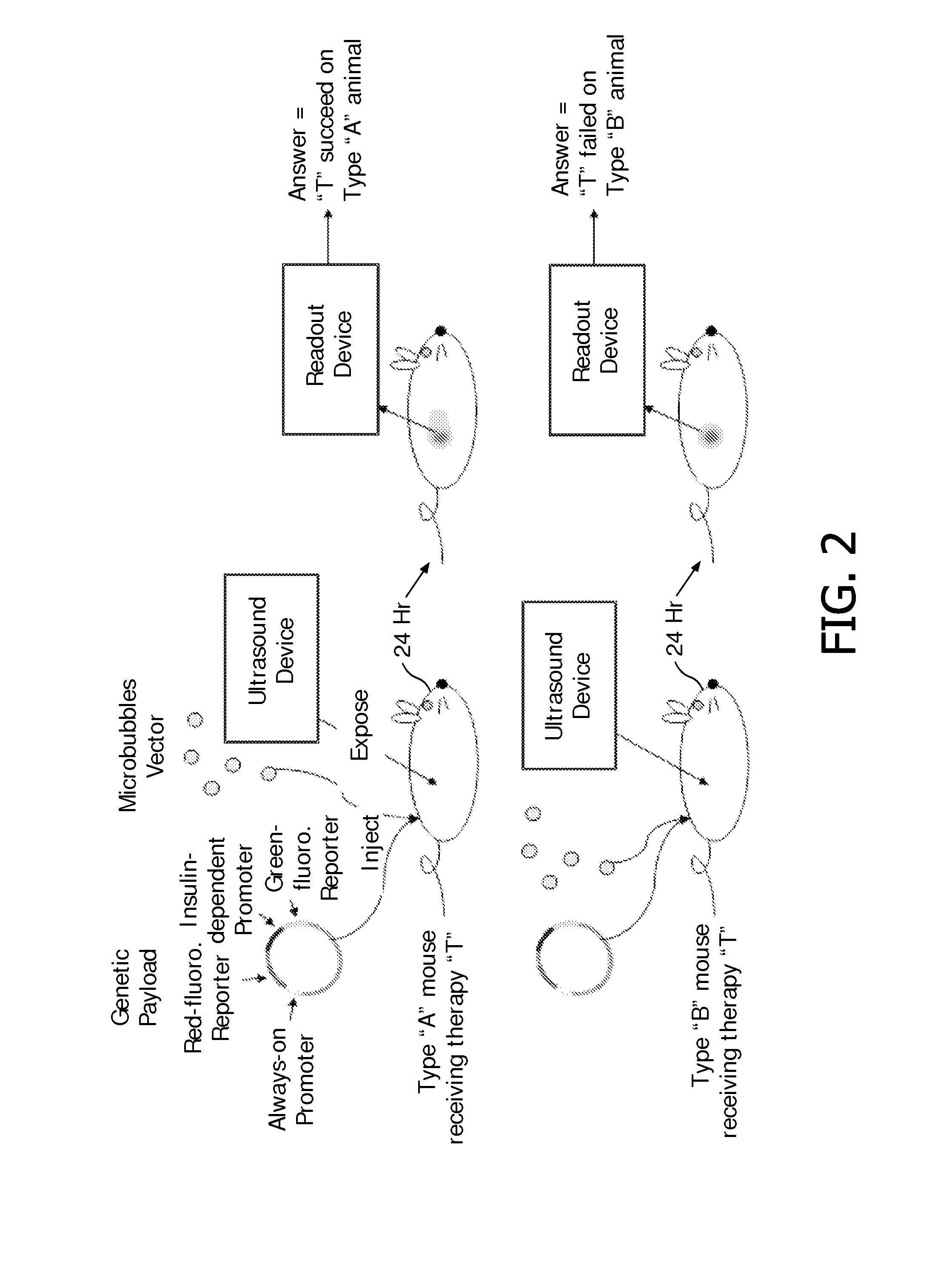In vivo expression analysis using ultrasound-induced transfection of reporter constructs
a reporter construct and expression analysis technology, applied in the field of expression analysis in mammals, can solve the problems of reducing the stability requiring physical isolation and destruction of either the tissue or cells that contain, and reducing the accuracy of in vivo analysis. , to achieve the effect of minimizing systemic side effects and increasing in vivo stability
- Summary
- Abstract
- Description
- Claims
- Application Information
AI Technical Summary
Benefits of technology
Problems solved by technology
Method used
Image
Examples
examples
Type II Diabetes Insulin Resistance
[0058]Type II diabetes insulin resistance causes glucose levels in the blood to be abnormally high. This occurs because the insulin signaling pathway is damaged; functional insulin signaling would normally result in stabilization of blood glucose levels. In type II diabetes increased insulin levels that result from feeding fail to trigger the insulin signaling pathway. It is also possible that insulin production itself is decreased. In either case, this failure allows cells of the liver and adipose tissue to continue converting lipids and glycogen stores to glucose, despite the fact that glucose is abundant from the from the food recently digested. This is how abnormally high blood glucose levels are achieved. Therefore, it would be of interest to identify compounds that reduce the conversion of glycogen and lipids to glucose in the liver and adipose tissue.
[0059]Many pathways play a role in the regulation of cell metabolism. A prominent pathway di...
PUM
| Property | Measurement | Unit |
|---|---|---|
| mean size | aaaaa | aaaaa |
| mean size | aaaaa | aaaaa |
| fluorescent | aaaaa | aaaaa |
Abstract
Description
Claims
Application Information
 Login to View More
Login to View More - R&D
- Intellectual Property
- Life Sciences
- Materials
- Tech Scout
- Unparalleled Data Quality
- Higher Quality Content
- 60% Fewer Hallucinations
Browse by: Latest US Patents, China's latest patents, Technical Efficacy Thesaurus, Application Domain, Technology Topic, Popular Technical Reports.
© 2025 PatSnap. All rights reserved.Legal|Privacy policy|Modern Slavery Act Transparency Statement|Sitemap|About US| Contact US: help@patsnap.com



